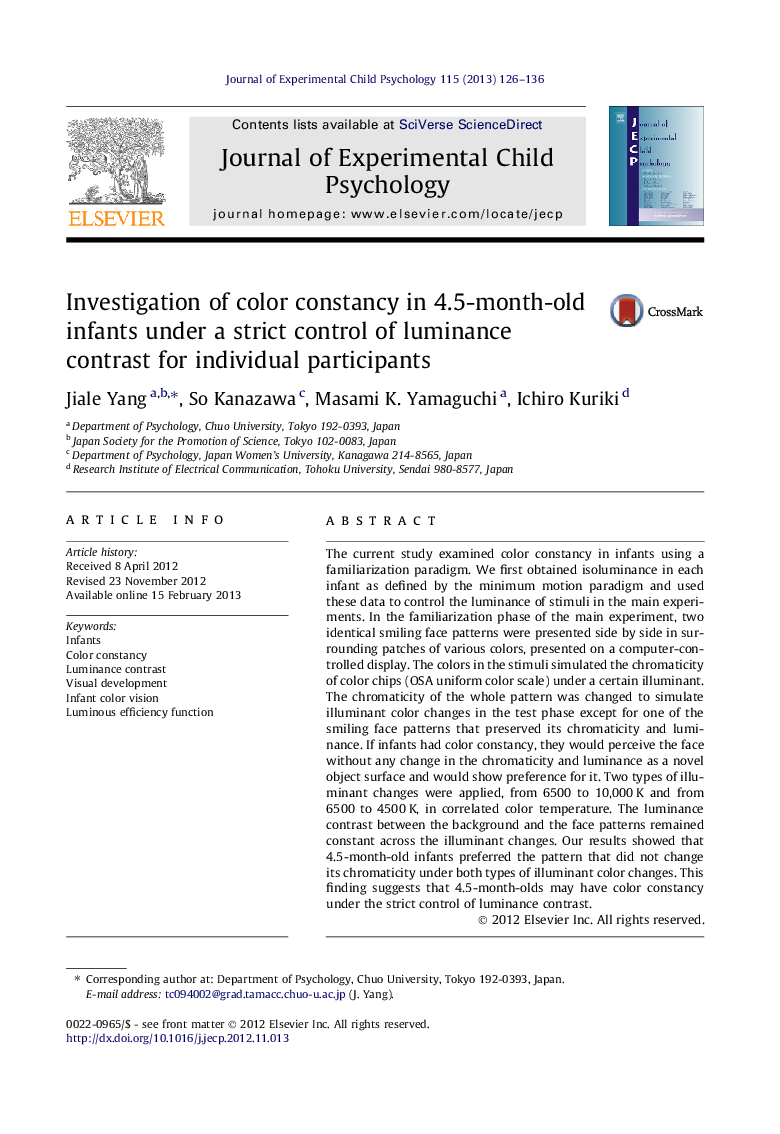| Article ID | Journal | Published Year | Pages | File Type |
|---|---|---|---|---|
| 918196 | Journal of Experimental Child Psychology | 2013 | 11 Pages |
The current study examined color constancy in infants using a familiarization paradigm. We first obtained isoluminance in each infant as defined by the minimum motion paradigm and used these data to control the luminance of stimuli in the main experiments. In the familiarization phase of the main experiment, two identical smiling face patterns were presented side by side in surrounding patches of various colors, presented on a computer-controlled display. The colors in the stimuli simulated the chromaticity of color chips (OSA uniform color scale) under a certain illuminant. The chromaticity of the whole pattern was changed to simulate illuminant color changes in the test phase except for one of the smiling face patterns that preserved its chromaticity and luminance. If infants had color constancy, they would perceive the face without any change in the chromaticity and luminance as a novel object surface and would show preference for it. Two types of illuminant changes were applied, from 6500 to 10,000 K and from 6500 to 4500 K, in correlated color temperature. The luminance contrast between the background and the face patterns remained constant across the illuminant changes. Our results showed that 4.5-month-old infants preferred the pattern that did not change its chromaticity under both types of illuminant color changes. This finding suggests that 4.5-month-olds may have color constancy under the strict control of luminance contrast.
► We obtained isoluminance in each infant as defined by the minimum motion paradigm. ► We tested the infants’ color constancy in two types of illuminant changes. ► Our results showed that 4.5 month old infants may have color constancy.
